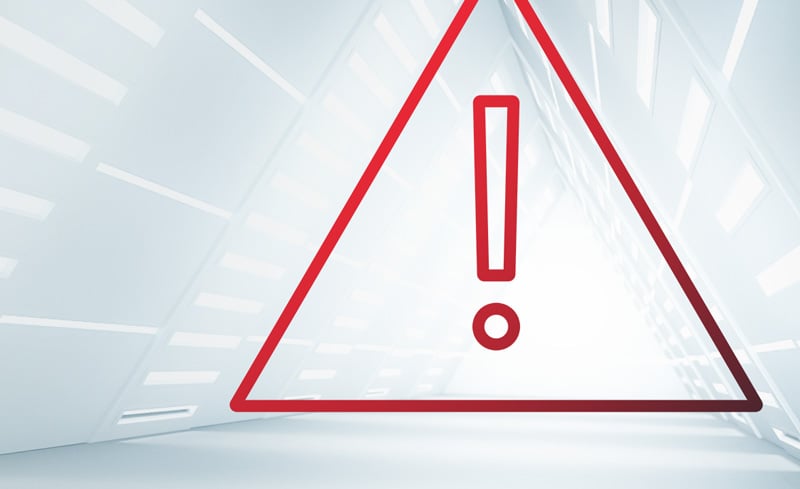
Top 10 Health Tech Hazards for 2023: A Tool to Reduce Preventable Harm
This is part one of a two-part blog.
Reducing preventable harm is at the core of ECRI’s mission, and has been for more than 50 years. Since the publication of the first issue of the Health Devices journal in 1971, ECRI has served as an information clearinghouse for hazards and deficiencies in medical devices. We collect and analyze reports of device-related problems, identify root causes, and develop practical recommendations to prevent future occurrences and prevent harm.
ECRI’s annual Top 10 Health Technology Hazards report is one tool we develop to help members of the healthcare community participate in that mission. The report informs frontline healthcare workers, administrators, clinical engineers, IT professionals, medical device manufacturers, patients, regulatory bodies, and others about device-related hazards, and it empowers them to address those issues to make healthcare safer.
Identifying hazards
ECRI’s goal when producing its annual list is to identify the potential sources of technology-related danger that warrant the greatest attention for the coming year. The topics we choose are not necessarily the most frequently reported problems or the ones associated with the most severe consequences—although we do consider such information in our analysis. Rather, the list reflects our judgment about which risks should be given attention now to help care providers, as well as device manufacturers, prioritize their patient safety efforts.
How do we make those judgments? ECRI engineers, scientists, clinicians, and other patient safety experts nominate topics for consideration based on the expertise and insight gained through their daily work, whether it be investigating incidents, testing medical devices in the ECRI lab, assessing hospital operations and practices, or speaking with stakeholders at healthcare organizations and in industry. Importantly, we also consider the thousands of health-technology-related problem reports that we receive through our Problem Reporting Network and through data that participating facilities share with our patient safety organization, ECRI and the Institute for Safe Medication Practices PSO. (For this list, we focus on general hazards: problems that result from the risks inherent to the use of certain types or combinations of medical technologies. We do not include hazards that pertain to specific models or suppliers.)
After the topic nomination phase, professionals from ECRI’s many program areas, as well as external advisors, review the topics and vote for their top 10. An internal selection committee assesses the voting data, debates the merits of each topic, and selects the final 10. In making these determinations, we weigh factors such as severity, frequency, breadth, and insidiousness of the hazard, as well as the potential for reputational harm if the hazard is not addressed.
We encourage readers to examine these same factors when judging the criticality of the hazards on our list, as well as others within their own care environments. We know not every hazard on our list will apply to all readers; rather, we intend the list to be a starting point for patient safety discussions. Individuals and organizations can then focus activities on the areas where they can achieve the greatest impact.
ECRI identified the following topics as warranting priority attention for 2023:
- Gaps in Recalls for At-Home Medical Devices Cause Patient Confusion and Harm
- Growing Number of Defective Single-Use Medical Devices Puts Patients at Risk
- Inappropriate Use of Automated Dispensing Cabinet Overrides Can Result in Medication Errors
- Undetected Venous Needle Dislodgement or Access-Bloodline Separation during Hemodialysis Can Lead to Death
- Failure to Manage Cybersecurity Risks Associated with Cloud-Based Clinical Systems Can Result in Care Disruptions
- Inflatable Pressure Infusers Can Deliver Fatal Air Emboli from IV Solution Bags
- Confusion Surrounding Ventilator Cleaning and Disinfection Requirements Can Lead to Cross-Contamination
- Common Misconceptions about Electrosurgery Can Lead to Serious Burns
- Overuse of Cardiac Telemetry Can Lead to Clinician Cognitive Overload and Missed Critical Events
- Underreporting Device-Related Issues May Risk Recurrence
Developing a plan
Identifying critical patient safety topics is only one part of the process. Preventing harm requires a plan. ECRI’s report includes recommendations for starting that process.
The specific steps required will be dictated by the hazard being addressed; but in most cases the plan should include input from a range of stakeholders. For any technology-related safety initiative, ECRI recommends securing the involvement of the following:
- Department leaders and administrators who can champion the safety effort and muster the resources to enact it
- Frontline workers who can provide a real-world perspective on the practicality of any proposed solutions
- Supply chain and purchasing professionals who can procure safer products or negotiate with suppliers for requested improvements
- Clinical engineers, IT professionals, and other technical staff who can ensure that changes are implemented in an effective and sustainable manner
Eliminating or minimizing the risks
All the items on ECRI’s list represent problems that can be avoided or risks that can be minimized through the careful management of technologies. The report highlights steps that healthcare facilities and care providers can take to improve technology safety and reduce preventable harm, regardless of whether care is provided in a hospital, an ambulatory care center, a patient's home, or other setting.
But healthcare technology managers, care providers, and other device users cannot do it alone. The medical device industry also has a role to play. ECRI contends that some hazards could be mitigated—and possibly eliminated—by improved device designs or manufacturing practices. We encourage industry to rise to that challenge.
Don’t miss next week’s blog—we will discuss our challenge to industry in greater detail in Part 2 of this blog post.
Download your copy free today
ECRI’s 2023 Top 10 Health Technology Hazards report is available now, so download your copy to learn more about hazards that may put patients at risk and what you can do about them. Members of any ECRI program can access the report through their member web pages. Others can access an overview of the report by downloading the free Executive Brief.
